Along their journey, Aisha and Lucas met many regenerative farmers. But what prompted those farmers to adopt the practice?
In 2020, Paul and Janine Raabe started the community farm Hof Lebensberg in the Northern Palatinate, Germany after concluding that the only tangible way they could combat climate change was to create their own inherently sustainable ecosystem.
Also working as regenerative agroforestry consultants, the couple soon realised that the market was not providing nursery trees of the right species, quality, or price. Hoping to facilitate the spread of agroforestry and make it scalable for other farmers to implement, they decided to established the tree nursery ‘Ackerbaum’ in 2018, looking to fulfill the demand generated by their consultancy clients.
We practise regenerative agriculture because we wanted to restore the degraded ecosystem, the biodiversity losses, but also to contribute to a healthy and lively region.
Janine Raabe
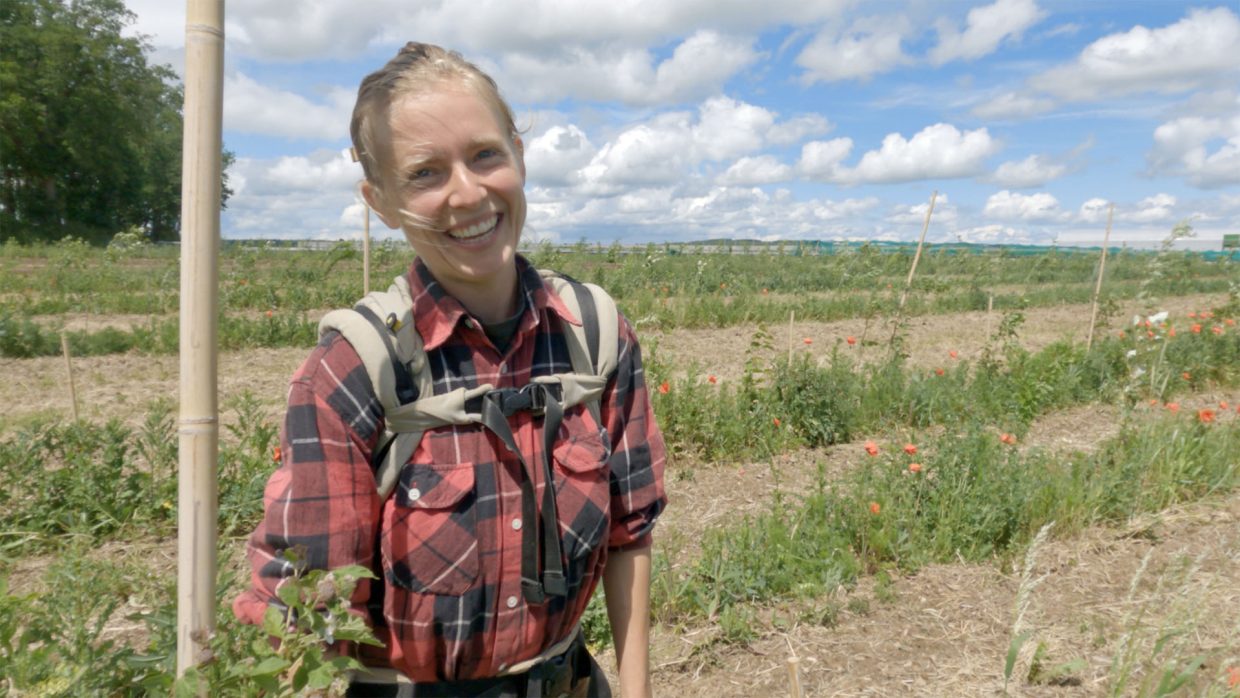
In Jordan, Rakan Mehyar, from Carob Farm, explained that it was bees that drew him into regenerative agriculture. He started with 30 hives, but soon found that the colony was struggling to survive. He tried planting lavender and rosemary, hoping the pollen would solve the problem, but began to understand that the bees needed a larger area to pollinate. Mr Mehyar’s farm is surrounded by monoculture olive fields, which are consistently sprayed and ploughed, with no wildflowers to be found. The only solution to keep the bees alive was to start increasing biodiversity on his own piece of land and to feed the bees with nectar in the meantime.
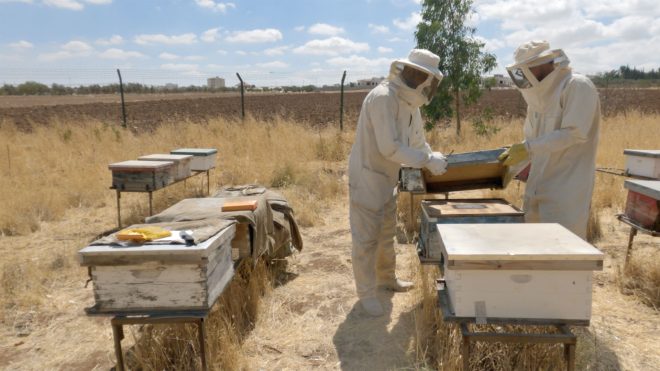
In Absdorf, Austria, the cycling duo visited Alfred Grand, an organic arable farmer, market gardener and managing director at Vermigrand, a vermicompost company he started about 25 years ago to produce peat-free soil substrates using epigean earthworms.
Mr Grand explained what had inspired him to transition to regenerative farming practices. “The earthworms trained me and initiated my curiosity for soil and soil-plant interactions. The earthworms also inspired me to convert to organic agriculture. The worms are a lot more intelligent than humans.”
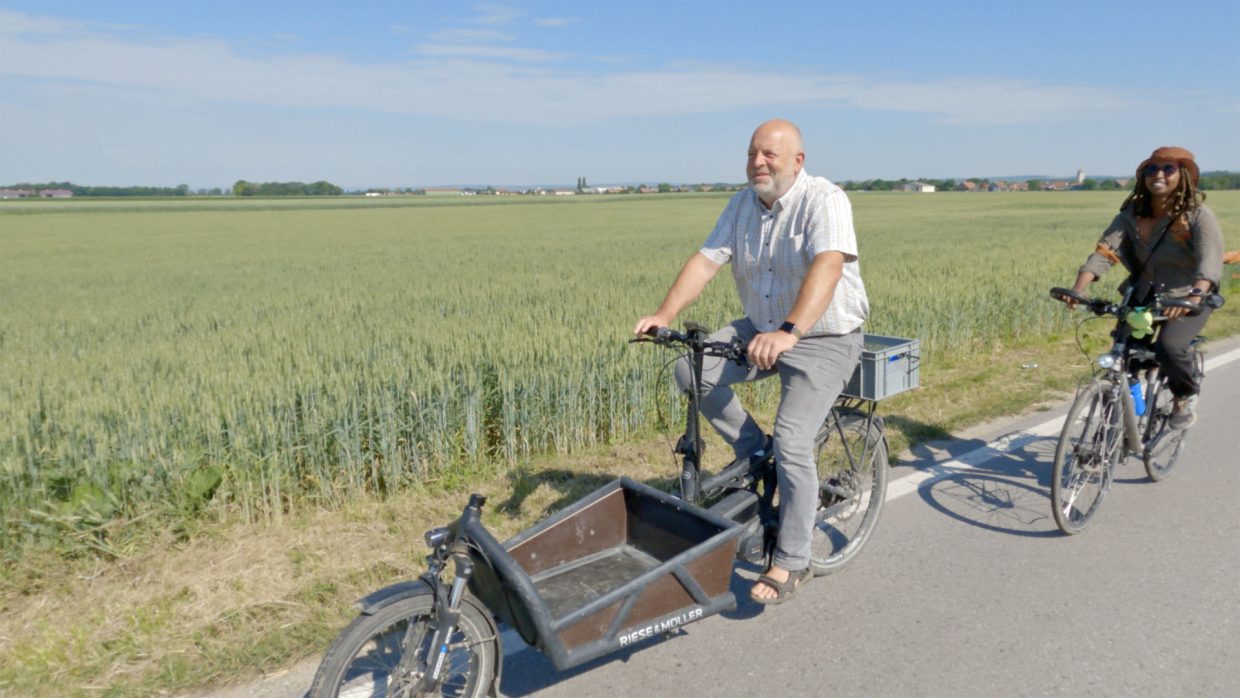
The earthworms seemingly effortlessly, seem to have a symbiotic relationship with so many aspects of their ecosystem, like with water and soil. Realising this made me transition our family farm to organic production and later to regenerative. Despite the community around who had little trust in the success of organic agriculture.
Alfred Grand
All the farmers had one thing in common: the desire for change. They have all experienced the consequences of biodiversity decline and aim to reverse this trend.
About Cycle to Farms

Our journey started in May 2022 in the Netherlands and took us through Germany, Austria, Slovenia, Croatia, Bosnia and Herzegovina, Montenegro, Albania, Greece, Jordan, Egypt and Kenya. Currently, we are cycling and visiting farms in Uganda. As we progress, we gain various insights of regenerative farming practices, which we cover in a series of articles.
We visited regenerative farms in various contexts to gain valuable lessons and insights on transitioning to climate-resilient agricultural practices. It gaves us a better understanding of how farmers regenerate their land, how to best support regenerative farmers and inspire others to transition to regenerative agriculture.
The farms we visited varied in size, from a few hectares to thousands, and in soil type, from clay to rocky and sandy desert soils. We also saw different production systems, such as arable farming, fruit orchards, food forests, and market gardens, often farms had a mix of production systems.
Despite the diversity, all farms shared a common goal: combatting climate change, strengthening soil health, managing water, and increasing biodiversity. All the farmers we visited were solution-oriented and focused on shared principles, while maintaining individual practices and unique business models.
Find out more about the project Cycle to Farms
How to increase biodiversity above ground
Most of the farms visited combine different production systems, from arable farming, market gardening, to agroforestry and livestock. The integration of systems is important for restoring the ecosystem, enabling enterprises to function with reduced external inputs. All the farmers visited had an agroforestry system in their design plan, because they have benefits like the potential for higher crop yields, reduced topsoil erosion, provision of shade and shelter, and can act as a wind and firebreak.
In 2020, we planted 30 000 trees and shrubs, and in the next 15 years, we will have a nut forest between the 50-meter stripes. On the larger stripes, we grow crops such as potatoes and cereals. The nut forest provides shade and wind break, which is very important because our farm is located on top of a hill.
Janine Raabe
Mr and Mrs Raabe planted a multi variety nut forest, including chestnut, almond, peanut, quad nut, hazelnut, walnut, pecan, and black walnut trees, as well as other varieties with different genomes, which can cross-pollinate. On the outer rows, they planted poplar and tayberry every metre. In between, they planted biomass trees which are increasing soil biomass and protecting the soil.
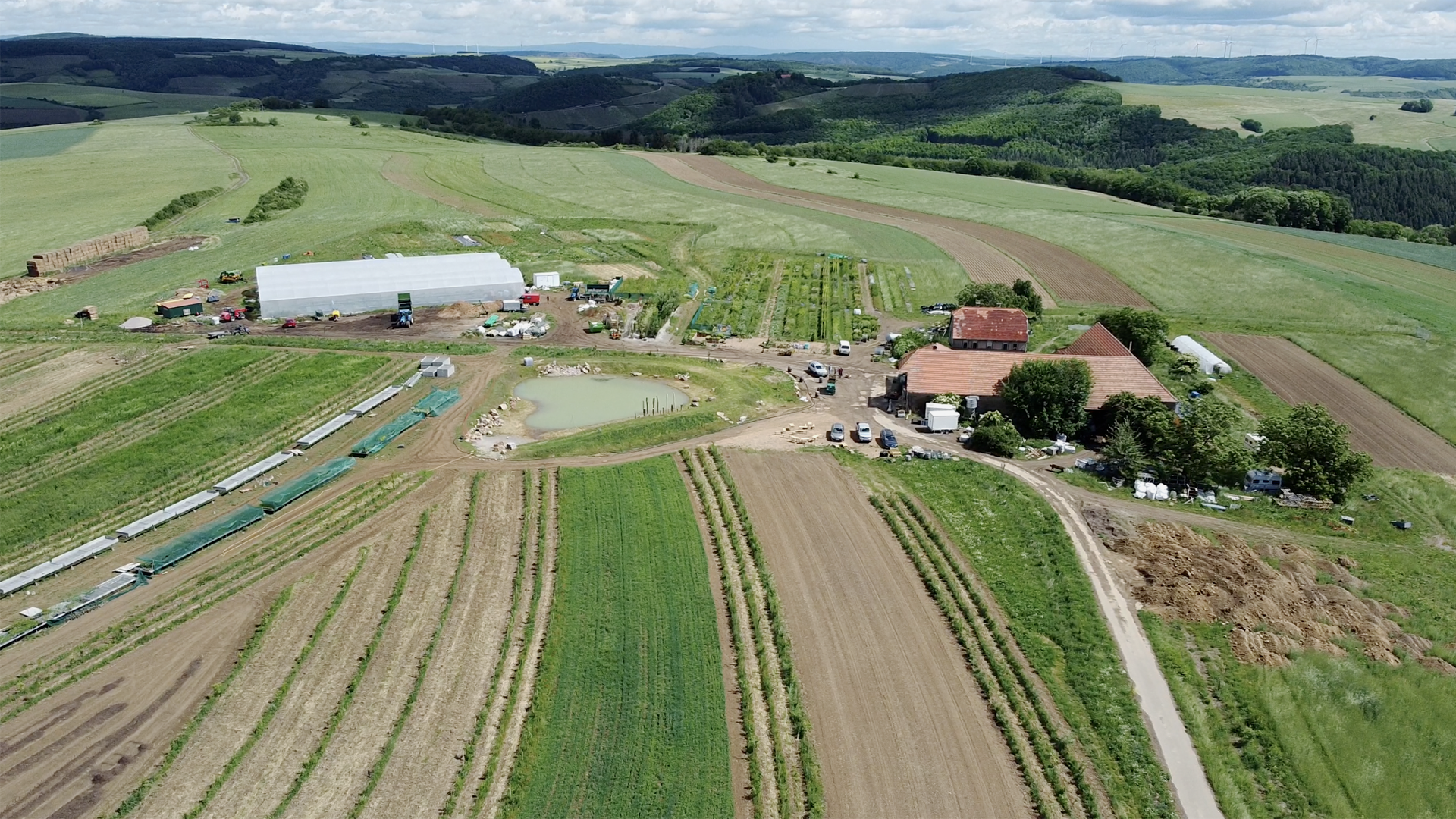
Besides agroforestry systems, most farms also have a market garden, where they offer a wide range and steady supply of fresh produce during the local growing season.
In the Netherlands, we visited Howard Koster and Claudia Rudorf, a young family who started farming in March 2022 on a 35ha plot of land owned by Land van Ons – a citizen’s co-operative which works to restore biodiversity and landscapes by leasing land to farmers who want to work in a nature-friendly way. Volunteers from Land van Ons support leaseholders to implement their plans, assisting with day-to-day operations.
“We plan to use nature-inclusive methods across our plot,” explains Mr Koster. “In the arable fields we’re going to grow hemp, lupins (for protein) and cereals, in rotation with other crops. And to regenerate soils we’ll use a mixture of grass and clover for the cows and sheep to graze.”
While trying to catch an escaped sheep, Mr Koster stresses the importance of having livestock on the farm. “Animals are part of the ecosystem and also have an essential role in our food production system and the regeneration of soils.”
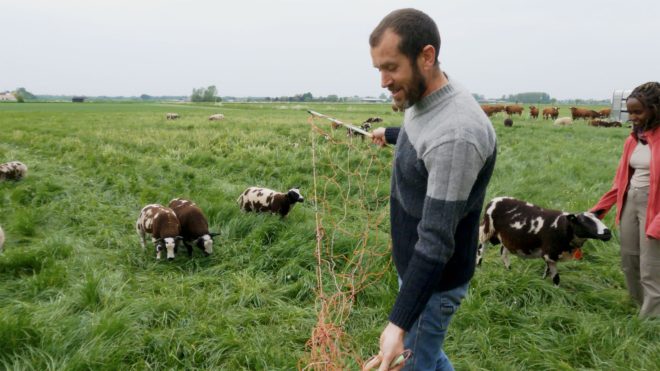
The farmers visited also focus on diversifying the plant species and varieties grown on their land, benefiting biodiversity across the farms. Different plants and trees attract and create habitats for organisms like birds, owls, bats, butterflies, and bees, all of which contribute to the health of a farm and have an impact both above and below ground.
Practices to increase biodiversity below ground
Unlike other farming systems, regenerative agriculture is specifically aimed at improving soil health. Soil is the foundation of farming and the main factor in increasing biodiversity, both above and below ground.
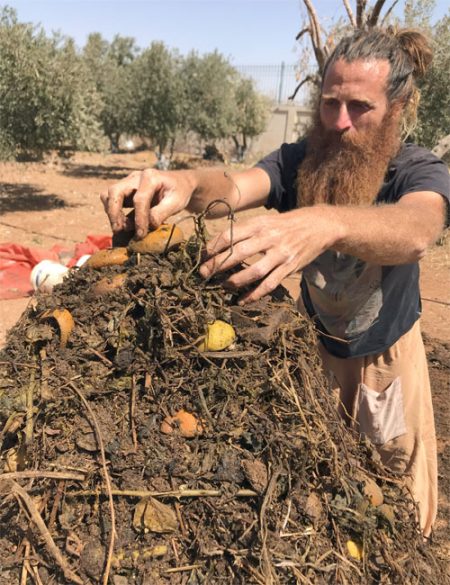
On our journey, we have seen common practices that focus on building organic matter in the soil using compost. This is a complex decomposition process where plant material, water and animal residues are combined to form a sanitised compost.
Compost is like a blank page, the more colours you put into it the more colours you get out of it.
Fadoul Kawar
Amid degraded land characterised by overgrazed fields and an occasional passing cyclone carrying eroded soil, the couple met Fadoul Kawar, who is regenerating a one-hectare field in Jordan using compost. “Compost theories are focused on one specific context of soil composition, but different contexts require different compost,” he says. “For example, it’s not common to use orange peels in compost. But while the orange peel may disturb some soils, it tends to enhance the nutrient and pH balance here.”
There are several ways to restore nutrient balance. Mr Grand uses earthworms in his compost to restore soil nutrients. “Different organisms are responsible for different nutrient cycles,” he says. “Earthworms are very efficient at recycling food waste and other organic matter into nutrient-rich compost.”
We want to grow food but we also want to grow soil
Alfred Grand, Grand Garden, Austria
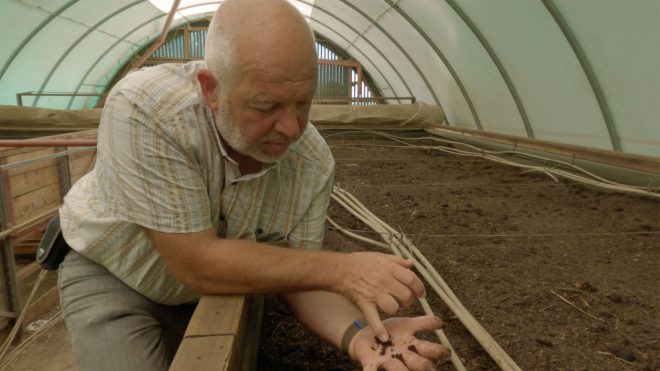
Regenerative agriculture a beacon of hope for biodiversity
For all the farmers, the transition to regenerative agriculture was prompted by challenges, be it a lack of plant material to develop fertile agroforestry systems, or a lack of diversity to keep bee colonies alive, or the need to revitalise the soil with compost. Its clear farmers are taking an active role in addressing the challenges posed by climate change, and perhaps the most important lesson is that we cannot wait for solutions to arrive at our doors. If climate related issues are to be addressed, we must start now, and develop healthy ecosystems at a regional level.

